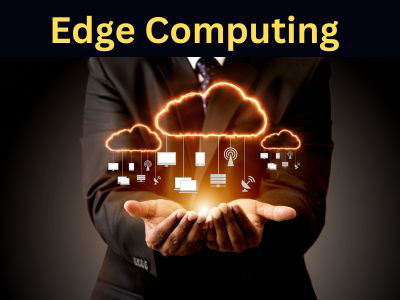Key Takeaway
The principle of edge computing is to process data closer to where it is generated, at the “edge” of the network, instead of sending it to a centralized cloud server. This reduces latency and speeds up data processing.
By handling data locally, edge computing allows for real-time decision-making, making it ideal for applications like IoT devices, autonomous vehicles, and smart cities where immediate responses are needed.
The Core Principles Behind Edge Computing Technology
Edge computing operates on the principles of decentralization, data proximity, and real-time analytics. By bringing computation closer to data sources, it reduces the reliance on distant cloud servers, leading to faster data processing. This is crucial in applications like Industrial IoT (IIoT) where delays could affect operations.
Edge devices manage local data processing, storage, and analytics, ensuring quicker responses and reducing the need for continuous cloud communication. This approach not only enhances speed but also cuts down costs associated with cloud data transfer.

How Edge Computing Reduces Latency and Improves Efficiency
Edge computing significantly reduces latency and improves efficiency by processing data closer to its source, rather than relying on centralized cloud systems. By localizing data analysis, edge computing eliminates the need for long-distance data transmission to the cloud, which can introduce delays.
For example, in applications like autonomous driving, even a few milliseconds of delay can be critical. Edge computing ensures that sensor data is processed in real time, enabling instant decision-making that is crucial for vehicle navigation and safety.
Edge computing also improves efficiency by minimizing bandwidth usage. Since only relevant or processed data needs to be sent to the cloud, edge systems help reduce network traffic and optimize the flow of data. This reduction in bandwidth consumption leads to cost savings and ensures that the network can handle more devices and data streams.
Moreover, by distributing processing power across multiple edge nodes, edge computing avoids the performance bottlenecks typically associated with central cloud systems. This distributed architecture allows systems to scale easily and operate more efficiently in dynamic environments.
In essence, edge computing enables low-latency, high-efficiency operations, which are essential for real-time applications and systems requiring quick responses.
You May Like to Read
Data Locality and the Need for Edge Processing
In an increasingly connected world, the volume of data generated by IoT devices is growing exponentially. This data, if sent to centralized cloud systems, can overwhelm networks, leading to latency issues and higher costs. Data locality—processing data closer to where it is generated—is a solution to this challenge. Edge computing addresses this by ensuring that only essential data is transmitted to the cloud while allowing real-time analytics to occur locally. By enabling faster processing, edge computing improves the speed of decision-making, which is especially critical in sectors like healthcare, manufacturing, and autonomous vehicles, where delays can have serious consequences. The ability to process data on-site not only ensures timely responses but also improves data privacy by minimizing data transmission.
Benefits of Distributed Data Processing at the Edge
Distributed data processing at the edge offers significant advantages over traditional cloud computing, particularly when it comes to latency, bandwidth, and real-time decision-making. One of the primary benefits is reduced latency, as edge computing enables data processing at or near the source, eliminating the need to send data to centralized cloud servers. This is crucial in applications that require instant responses, such as autonomous vehicles, industrial automation, and healthcare monitoring, where even slight delays could have serious consequences.
Another benefit of edge computing is reduced bandwidth usage. By processing data locally, only relevant insights or summaries are sent to the cloud, reducing the amount of data that needs to be transmitted. This can lead to significant cost savings in terms of data transmission and network infrastructure. In remote or rural areas where internet connectivity may be limited or unreliable, edge computing provides a reliable solution for maintaining operations without overburdening network resources.
Key Principles for Successful Edge Computing Implementations
Successful edge computing implementations are guided by several key principles that ensure efficiency, scalability, and security. One essential principle is local processing, which emphasizes the importance of processing data close to the source to reduce latency and bandwidth usage. By filtering and analyzing data at the edge, businesses can quickly make decisions and respond to real-time events without relying on centralized systems.
Another key principle is interoperability. As edge computing involves multiple devices and systems, it is crucial to ensure that these devices can communicate and work together seamlessly. Adopting open standards and protocols can help businesses achieve interoperability and avoid vendor lock-in, allowing them to mix and match edge devices from different manufacturers.
Finally, security and data privacy are critical principles in edge computing. With edge devices often located in remote areas or connected to large networks of sensors and machines, ensuring that data is protected from cyber threats is paramount. Implementing strong security measures such as encryption, authentication, and access control helps safeguard sensitive data and ensures the integrity of the entire edge computing system.
Conclusion
The principle of edge computing is to process data closer to its source, reducing the need to transmit large amounts of data to centralized servers or cloud data centers. This decentralized approach enables faster data processing, lower latency, and more efficient use of bandwidth. By bringing computing resources to the network’s edge, edge computing ensures that critical data can be analyzed and acted upon in real time, which is crucial for applications like IoT, autonomous vehicles, smart cities, and industrial automation. Edge computing supports localized decision-making and enhances the performance of connected systems.
